
An introductory lesson on the basics of heredity, and the inheritance of genetic traits. [7:57]
- Subject:
- Science
- Material Type:
- Lesson
- Provider:
- Sophia Learning
- Date Added:
- 08/07/2023

An introductory lesson on the basics of heredity, and the inheritance of genetic traits. [7:57]

Biology 2e is designed to cover the scope and sequence requirements of a typical two-semester biology course for science majors. The text provides comprehensive coverage of foundational research and core biology concepts through an evolutionary lens. Biology includes rich features that engage students in scientific inquiry, highlight careers in the biological sciences, and offer everyday applications. The book also includes various types of practice and homework questions that help students understand—and apply—key concepts. The 2nd edition has been revised to incorporate clearer, more current, and more dynamic explanations, while maintaining the same organization as the first edition. Art and illustrations have been substantially improved, and the textbook features additional assessments and related resources.


By the end of this section, you will be able to do the following:
Define population genetics and describe how scientists use population genetics in studying population evolution
Define the Hardy-Weinberg principle and discuss its importance


By the end of this section, you will be able to do the following:
Explain the relationship between genotypes and phenotypes in dominant and recessive gene systems
Develop a Punnett square to calculate the expected proportions of genotypes and phenotypes in a monohybrid cross
Explain the purpose and methods of a test cross
Identify non-Mendelian inheritance patterns such as incomplete dominance, codominance, recessive lethals, multiple alleles, and sex linkage

This explanation of genetic drift is straightforward and easy to understand. Illustrations are provided to help visual learners

This animated lesson will explain how genes are inherited in pairs, one from the mother and one from the father.
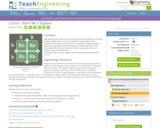
After watching video clips from the Harry Potter and the Goblet of Fire movie, students explore the use of Punnett squares to predict genetic trait inheritance. The objective of this lesson is to articulate concepts related to genetics through direct immersive interaction based on the theme, The Science Behind Harry Potter. Students' interest is piqued by the use of popular culture in the classroom.
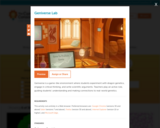
The Geniverse software is being developed as part of a five-year research project funded by the National Science Foundation. Still in its early stages, a Beta version of the software is currently being piloted in six schools throughout New England. We invite you to try the current Beta version, keeping in mind that you may encounter errors or pages that are not fully functional. If you encounter any problem, it may help to refresh or reload the web page.
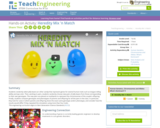
Students randomly select jelly beans (or other candy) that represent genes for several human traits such as tongue-rolling ability and eye color. Then, working in pairs (preferably of mixed gender), students randomly choose new pairs of jelly beans from those corresponding to their own genotypes. The new pairs are placed on toothpicks to represent the chromosomes of the couple's offspring. Finally, students compare genotypes and phenotypes of parents and offspring for all the "couples" in the class. In particular, they look to see if there are cases where parents and offspring share the exact same genotype and/or phenotype, and consider how the results would differ if they repeated the simulation using more than four traits.
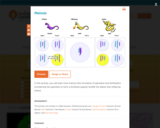
Meiosis is the process by which gametes (eggs and sperm) are made. Gametes have only one set of chromosomes. Therefore, meiosis involves a reduction in the amount of genetic material. Each gamete has only half the chromosomes of the original germ cell. Explore meiosis with a computer model of dragons. Run meiosis, inspect the chromosomes, then choose gametes to fertilize. Predict the results of the dragon offspring and try to make a dragon without legs. Learn why all siblings do not look alike.
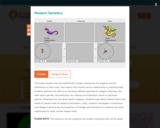
This initial module from the GENIQUEST project introduces the dragons and the inheritance of their traits, then delves into meiosis and its relationship to inherited traits. Students examine the effects of choosing different gametes on dragon offspring, and learn about genetic recombination by creating recombination events to generate specific offspring from two given parent dragons. Students learn about inbred strains and breed an inbred strain of dragons themselves.

A narrated learning activity illustrating how a monohybrid cross of genetic traits gets passed on to offspring. [3:40]

This resource explains Mendel's first law (Law of Segregation) in detail. Includes Mendel's original experiments with results and conclusions.

Read about phenylketonuria and the tests used to diagnose it in those who might have inherited this recessive trait.

Psychology is designed to meet scope and sequence requirements for the single-semester introduction to psychology course. The book offers a comprehensive treatment of core concepts, grounded in both classic studies and current and emerging research. The text also includes coverage of the DSM-5 in examinations of psychological disorders. Psychology incorporates discussions that reflect the diversity within the discipline, as well as the diversity of cultures and communities across the globe.Senior Contributing AuthorsRose M. Spielman, Formerly of Quinnipiac UniversityContributing AuthorsKathryn Dumper, Bainbridge State CollegeWilliam Jenkins, Mercer UniversityArlene Lacombe, Saint Joseph's UniversityMarilyn Lovett, Livingstone CollegeMarion Perlmutter, University of Michigan
